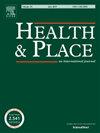“你不能在那种环境下治愈自己,你也不能指望这个国家的其他人能”:谈论西澳大利亚偏远土著社区的住房和环境健康。
IF 4.1
2区 医学
Q1 PUBLIC, ENVIRONMENTAL & OCCUPATIONAL HEALTH
引用次数: 0
摘要
澳大利亚偏远的土著社区位于传统土地上,对居民来说具有深厚的文化意义和意义。然而,植根于殖民统治的系统性不平等造成了持续的住房和健康差距,家庭和社区内环境卫生条件不足就是一个突出的例子。SToP (See, Treat, prevention)皮肤溃疡和疥疮试验旨在将金伯利9个社区5-9岁儿童的皮肤感染减少50%,该定性子研究旨在通过与生活和工作在偏远土著社区的人交流,了解环境卫生倡议的获取和看法。2019年至2022年期间,共有208人参加了个人或团体织布活动。利用健康的政治经济学视角,对137次纺纱会议进行了分析,揭示了健康方面的障碍,包括服务不频繁、住房不足以及实现家庭维持方面的根深蒂固的挑战。这些障碍来自管理、采购和物流安排;这是殖民和土地征用的直接结果,而不是个人行为的结果。解决这些障碍需要在服务提供方面制定公平的标准,明确土地和住房资产的决策权,能够及时维修的采购选择,有资源的当地维修,保证响应时间和持续的资金。只有消除结构性障碍,才能实现公平与和解。本文章由计算机程序翻译,如有差异,请以英文原文为准。
“You can't heal yourself in that setting and you wouldn't expect other people in this country to”: Yarning about housing and environmental health in remote Aboriginal communities of Western Australia
Remote Aboriginal communities in Australia are located on traditional lands holding deep cultural significance and meaning for residents. However, systemic inequity rooted in colonisation has driven persistent housing and health disparities, with inadequate environmental health conditions within homes and communities a prominent example. Embedded within the SToP (See, Treat, Prevent) Skin Sores and Scabies Trial, which aimed to reduce skin infections in children aged 5–9 years by 50 % across nine Kimberley communities, this qualitative sub-study sought to understand access to and perceptions of environmental health initiatives by yarning with those living and working in remote Aboriginal communities. Between 2019 and 2022, 208 people participated in individual or group yarning activities. Using a political economy of health lens, analysis of 137 yarning sessions revealed barriers to health, including infrequent services, inadequate housing, and entrenched challenges to achieving household maintenance. These obstacles stem from governance, procurement and logistics arrangements; a direct result of colonisation and land appropriation rather than individual behaviour. Addressing these barriers requires equitable standards in service provision, as well as clear decision rights over land and housing assets, procurement options enabling timely repairs, resourced local maintenance with guaranteed response times and sustained funding. Equity and reconciliation will only be achieved once structural barriers are removed.
求助全文
通过发布文献求助,成功后即可免费获取论文全文。
去求助
来源期刊

Health & Place
PUBLIC, ENVIRONMENTAL & OCCUPATIONAL HEALTH-
CiteScore
7.70
自引率
6.20%
发文量
176
审稿时长
29 days
期刊介绍:
he journal is an interdisciplinary journal dedicated to the study of all aspects of health and health care in which place or location matters.
 求助内容:
求助内容: 应助结果提醒方式:
应助结果提醒方式:


